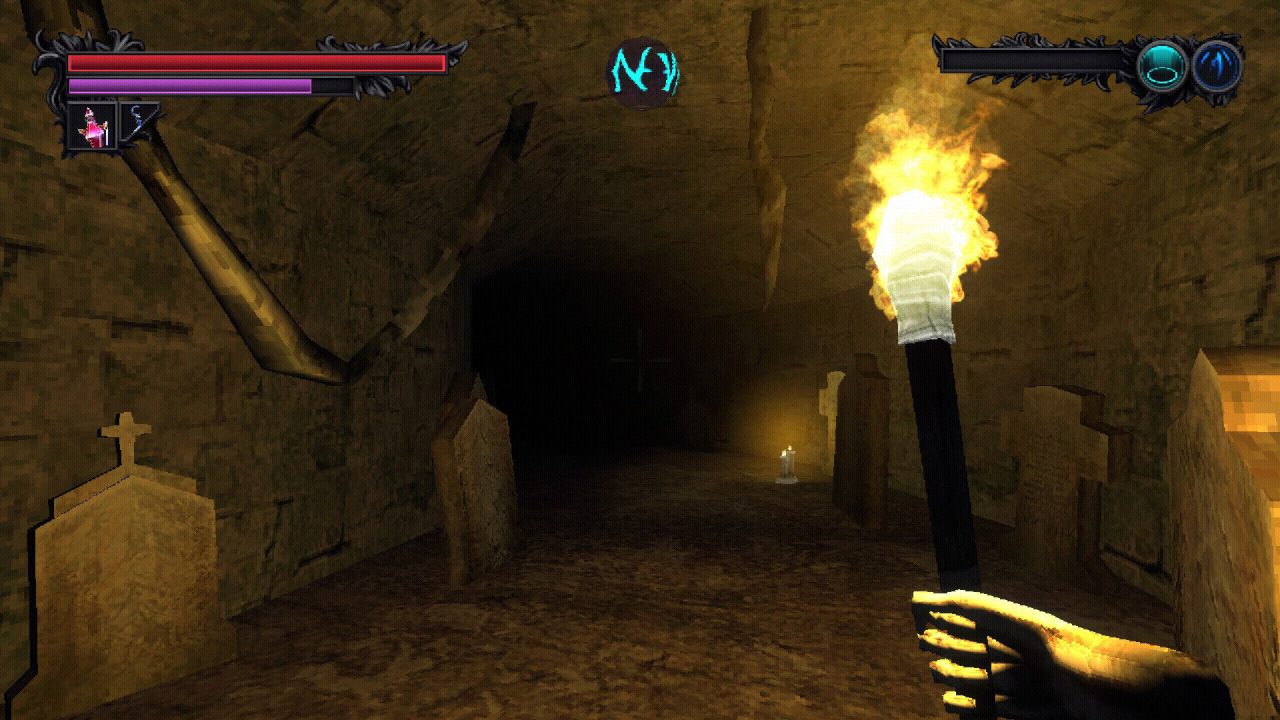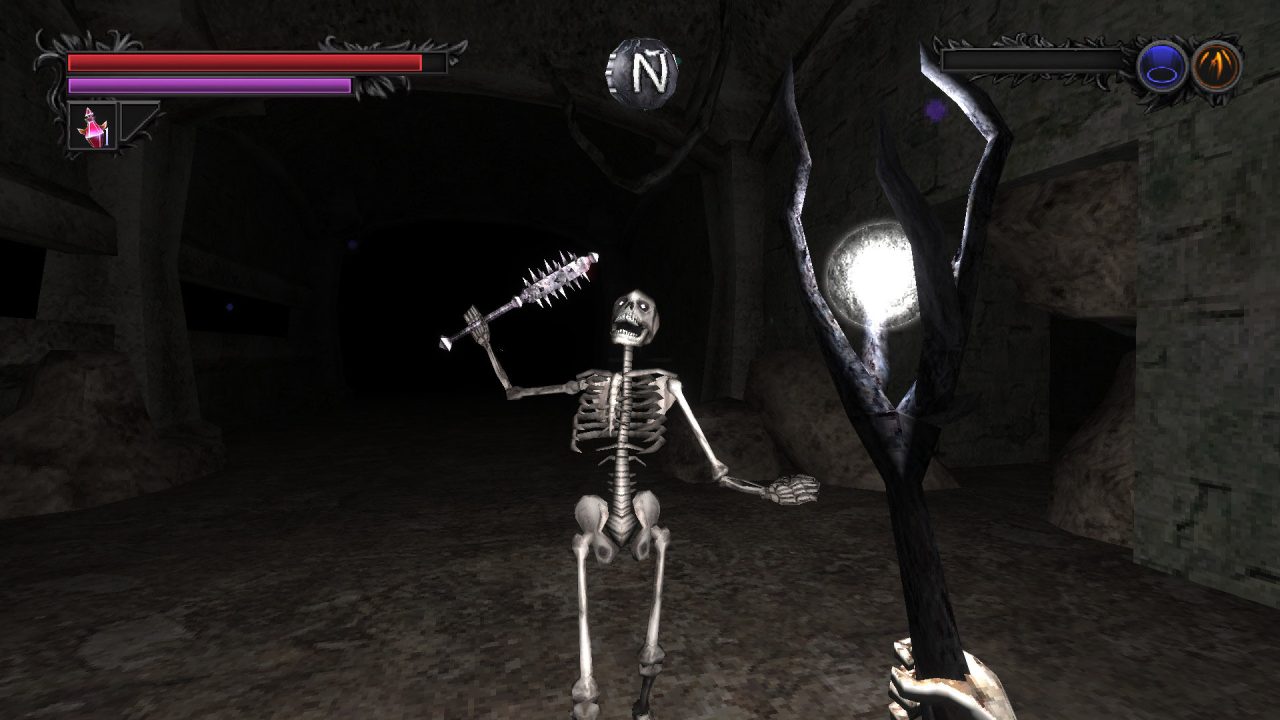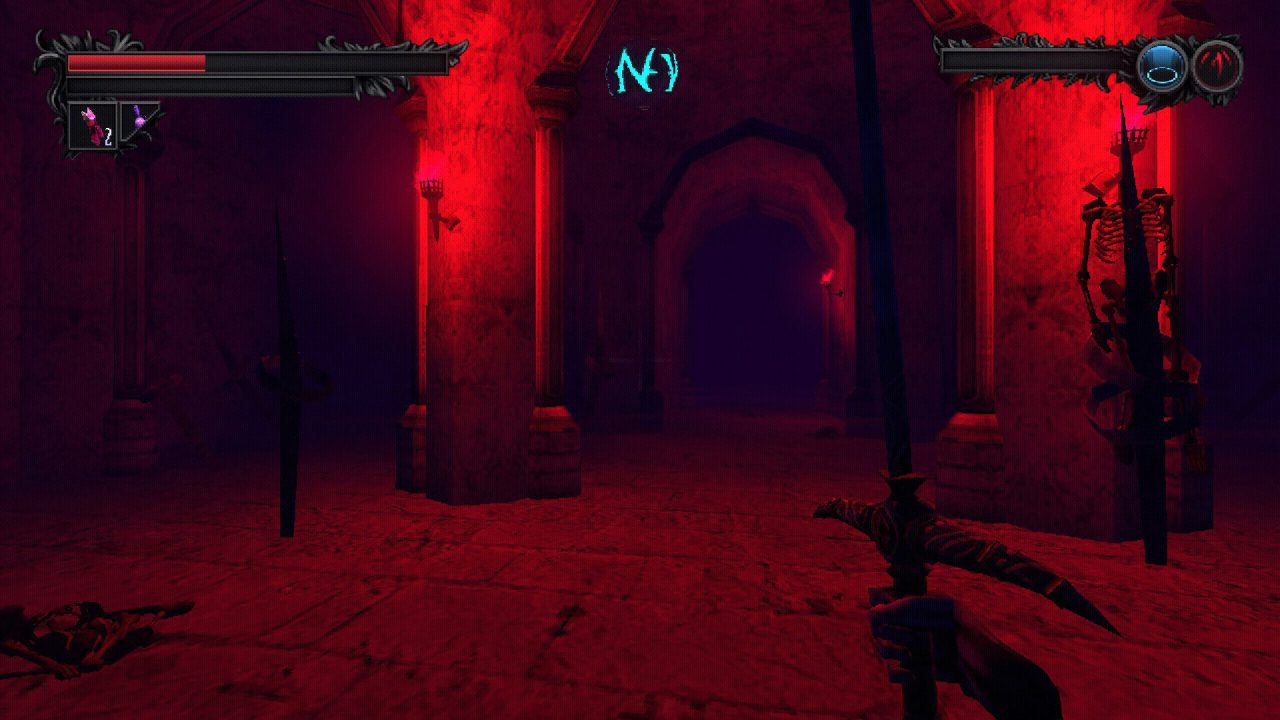It’s hard to think of a game developer more influential to the modern indie game development scene than FromSoftware. Clicking on the “Souls-like” tag on the Steam store will greet you with thousands of games influenced by FromSoft’s action RPG series that feature weighty melee combat, copious amounts of dodge-rolling, and crushing difficulty levels. You are less likely to see games influenced by the first-person dungeon-crawling RPGs FromSoftware cut their teeth on (King’s Field, Shadow Tower, Eternal Ring). However, solo developer Kira (most known for their first-person survival horror game Lost in Vivo) reached deep into the Great Well of FromSoftware’s pedigree and returned after a few years in early access with Lunacid. A love letter to FromSoftware’s RPG history, Lunacid manages to take the best parts of those early titles while updating the more obtuse and frustrating mechanics for a modern audience, putting a horror-infused spin on the genre in the process.
Lunacid begins with a strange, fishlike creature emerging from the sea and opening its giant maw, filling the air with a strange fog. A (suitably retro) text crawl explains that this creature blanketed the world in poisonous gas, bringing humanity to the brink of apocalypse and devolving society into a feudal system. In this era of suspicion and suffering, anyone deemed undesirable is taken to a massive pit called the Great Well and dumped inside to fend for themselves. You are one such person, branded a thief and tossed into the murky abyss deep below the ground, forced to delve further and further into this inhospitable realm in hopes of finding your way back to the surface. It’s a simple premise but provides plenty of justification for the dungeon-crawling and the strange, foreboding nature of the Great Well and its inhabitants.

Lunacid updates the old-school King’s Field format by including character creation and character builds introduced by the Souls series, but with a unique flavor to fit the game’s world. There are nine separate classes to choose from that determine your initial level, starting stats, character origins, and elemental resistances. Some character classes can confer additional benefits that alter your playstyle. I played as a Vampire, allowing me to regain small amounts of health when melee attacking organic enemies in exchange for increased weakness to fire and light elements and slower bleed recovery. Your starting class may also affect how other characters interact with you, and how you interact with the environment. A later area called Castle Le Fanu is home to many vampires and filled with fountains of blood. Drinking from these fountains restored my health, but the occasional holy water fountains damaged my character. Another nice aspect of character creation is that you can choose your character’s pronouns, which deepens the roleplaying connection to one’s avatar and serves as a subtle, inclusive nod to Kira’s non-binary identity.
Upon leveling up, you can allocate stat points to various statistics, giving you a great degree of control over how your character develops. You have your standard RPG character building, such as pumping points into strength and defense to increase melee damage and melee resistance, or doing the same for intelligence to increase magic damage and your mana pool, as well as decrease cast time for spells. Where things get a bit more interesting is with the speed and dexterity stats. One aspect of the King’s Field series that can frustrate new players is the slow character movement speed, which can make it feel as though your character is trudging through molasses. Lunacid increases the pace of the game by allowing the player to raise their movement speed through the speed stat. Similarly, dexterity determines damage with ranged weapons, but it also controls your character’s jump height. If you want to play a lightning-fast ranged character who zips around the battlefield while jumping to high locations enemies can’t reach as you pelt them with arrows, you’ll have a gameplay experience much more akin to a first-person shooter. Platforming is integrated seamlessly into the exploration and level design, and most players will want to put at least a few points into dexterity so they can reach some out-of-the-way items and locations.
Magic is just as engaging, as spells are learned simply by equipping different rings (a nice nod to Eternal Ring). Rings can be equipped on either the left or right hand, and are controlled by the corresponding shoulder button. Many spells are elemental projectiles, but there are also spells to summon creatures to help you in battle or objects that aid in exploration. Some spells have no combat applications but instead are used to uncover secrets in the environment. One of the greatest lightbulb moments I had when playing was realizing that the seemingly useless spell I found to summon a coffin could be used to stack coffins on top of each other to reach a previously inaccessible area. Using magic also increases the player’s Lunacy. Lunacy takes a little bit from world tendency in Demon’s Souls, Humanity in Dark Souls, and Insight in Bloodborne, as it increases the amount of damage the player deals and receives along with the experience gained. Furthermore, enemies can exhibit different behaviors depending on your Lunacy, environmental changes can occur, and the rate at which you accrue Lunacy is determined by the real-life lunar cycle. The effect of Lunacy typically isn’t incredibly impactful, but it can add a nice bit of texture to one player’s playthrough compared to someone else’s.
Melee combat is more traditional but makes some slight changes to the old FromSoft formula to fit the faster pace of Lunacid. King’s Field opted for a stamina bar that would slowly refill after striking to discourage spamming of attacks. Lunacid opts for a charge attack system, where you can execute a flurry of lighter blows or charge up for one powerful swing. This change suits the faster and more aggressive pace of the game, and the enemy behavior has also changed to account for a quicker, more nimble player. Most enemies in the old FromSoft dungeon crawlers were slow and lumbering, hitting hard if they connected but rather simple to circle-strafe around. Enemies in Lunacid are faster and more aggressive, and the deeper you venture into the Great Well, the more complex and cunning their behavior becomes.
The greatest strength of FromSoftware’s early work was the dark, foreboding atmosphere they created, immersing the player in the fantasy dungeon locations. Lunacid carries this tradition forward while establishing a unique tone and atmosphere of its own. The visual design is excellent, taking that low poly PlayStation look and adapting it to wider, higher-resolution displays to render 3D PlayStation graphics as they appear in memory, without all the jagged edges and texture warping. There are also several visual filters, such as a crunchier true-to-PS1 filter, a VHS-style filter, and a Vaporwave filter. Some of these filters can obscure the game’s text, but they are a fun option and fit well with the general aesthetic of the game.
In terms of art design and tone, Lunacid leans more heavily on the aesthetics and presentation of the Shadow Tower series and Kira’s past work on horror titles. Most areas fit firmly into dark fantasy such as dingy catacombs, haunted mausoleums, vampire castles, and fetid sewers. That’s not to say there isn’t enough variety in locations, as there are lighter areas that lean more on an ethereal and alien atmosphere as opposed to the darker, grimier aesthetic one might expect. Horror elements are significant components of the aesthetic and area design and help the game stand out compared to its inspirations. Quite a few locations feature well-placed jump scares, and one area even has an unkillable pursuer enemy that appears if you linger for too long. I found that this focus on horror added dimension to the exploration-focused gameplay, creating tension as I wandered through the labyrinthine passages and winding corridors. Every time I found a shortcut back to a save point I breathed a sigh of relief, and the search for secrets never devolved into frustrating pixel hunting. The anachronistic nature of the game’s secrets strengthened the sense of mystery surrounding the game’s world, and finding these secrets plays into the various endings, serving as a nice metatextual reward for hunting them down.
The visuals and art design go a long way to establish the game’s atmosphere, but even more crucial is the excellent soundtrack. Many of the game’s tracks were also composed by Kira, along with contributions from composer Jarren Crist and YouTuber ThorHighHeels. Kira’s compositions tend to be a bit more industrial, focusing on environmental sounds and somber melodies like with the tracks The Smile is Red or Washed Away. Crist’s tracks tend to incorporate more elements of house or drum & bass to accompany the gothic, somber melodies, harking back to the audio style of many games in the PlayStation era with tracks like Serence or Le Fanu. ThorHighHeels’ tracks are the most eclectic and varied, featuring everything from lo-fi hip-hop in Book Betrayal to the strings and drums of Sandhill Temple. Despite the wildly different influences and styles present in the game’s music, it all coalesces to form a cohesive whole, and each track perfectly fits the mood of the environments where you hear them.
Lunacid is the new gold standard for an indie homage. Kira shows how intimately familiar they are with the RPG legacy of FromSoftware by picking out what worked best in their classic dungeon crawlers and incorporating the strongest elements of their modern action RPGs. Despite how referential the game feels at times, it still manages to establish its own identity through the metanarrative and inclusion of horror elements. If you’ve never experienced FromSoftware’s first-person RPGs, Lunacid is a great starting point.





